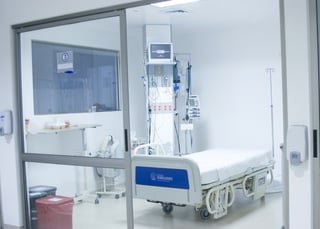Pressure Sensor Installation: In the Wall or In the Ceiling?
The landscape of room pressure monitors is diverse, with many different options of product design from various manufacturers. One of the basic choices in product design is whether to include the differential pressure transducer on-board with the touch screen, or external in the ceiling or interstitial space. There are pros and cons for each approach, depending mostly on the preference of the A&E firm or customer.
Many of today’s room pressure monitors offer an integrated DP sensor that is completely self-contained with the touch screen. These units get installed in an electrical wall box mounted outside the pressurized space, typically at eye level. The benefits of an integrated unit are the  convenience of final hook-ups of wires and tubing without the use of a ladder, and the fact that all the pieces of the unit for each application are in one box. Staying off a ladder can be important during final phases of construction when finished flooring is in place, or when service or recalibration may be required. Also, avoiding use of a ladder for service is often desirable in healthcare facilities, where an Infection Control Risk Assessment (ICRA) report may be required to go above the ceiling in infection prevention and control areas. The all-in-one approach does require that wiring and tubing be brought through the walls during the rough-in phase.
convenience of final hook-ups of wires and tubing without the use of a ladder, and the fact that all the pieces of the unit for each application are in one box. Staying off a ladder can be important during final phases of construction when finished flooring is in place, or when service or recalibration may be required. Also, avoiding use of a ladder for service is often desirable in healthcare facilities, where an Infection Control Risk Assessment (ICRA) report may be required to go above the ceiling in infection prevention and control areas. The all-in-one approach does require that wiring and tubing be brought through the walls during the rough-in phase.
An alternative approach makes use of an external pressure transducer wired to the display unit. The benefits of an external DP sensor include the convenience of running much of the tubing and wires above the ceiling vs. down wall cavities. Pressure pick-up ports are often ceiling mounted, with shorter tubing runs to the sensing unit. However, when service or recalibration is required, a technician has to go above the ceiling, with ICRA implications. One also has to remember where the sensing units are located, or have accurate drawings that show which ceiling tiles are the point of entry.
CLICK HERE to learn more about Setra’s room pressure monitors and pressure transducers.


